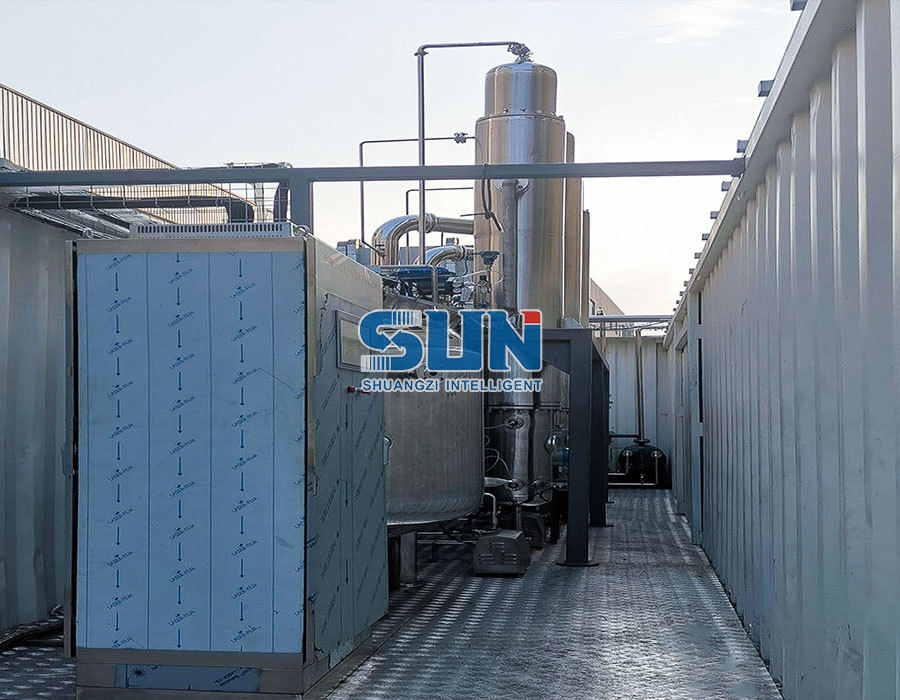Falling film evaporator are commonly used in the food industry for concentrating liquids, such as fruit juices, milk, and other food products. The working principle of a falling film evaporator involves the following steps:
Preheating: The feed liquid, which typically contains a high concentration of solids or dissolved substances, is preheated before entering the evaporator. This step helps in reducing the energy required for evaporation.
Feed distribution: The preheated liquid is uniformly distributed over the inner surface of vertical tubes or plates within the evaporator. The distribution system ensures a thin, even film of liquid flowing downward due to gravity.


Film formation: As the liquid flows down the heated surface, it forms a thin film due to gravity. The heat causes the liquid to evaporate, while the remaining concentrate continues to flow downward.
Vapor generation: The heat required for evaporation is supplied either by steam flowing through the tubes or plates or by a heating medium circulating around them. The heat causes the liquid to vaporize, generating vapor above the liquid film.
Vapor-liquid separation: The generated vapor rises through the evaporator, counter-current to the downward flow of the liquid film. The vapor and liquid are kept separate to maintain high heat transfer efficiency.
Vapor condensation: The vapor is then condensed, typically in a separate condenser, where it releases heat and transforms back into a liquid state. This condensation step results in the formation of the concentrated product.
Product collection: The concentrated product is collected separately, usually at the bottom of the evaporator, while any remaining liquid is drained off.
The falling film evaporator design offers several advantages, including high heat transfer coefficients, short residence time, and efficient use of energy. It is particularly well-suited for heat-sensitive products as the thin film and short residence time minimize product exposure to high temperatures, reducing the risk of thermal degradation.


 英语
英语 俄语
俄语










